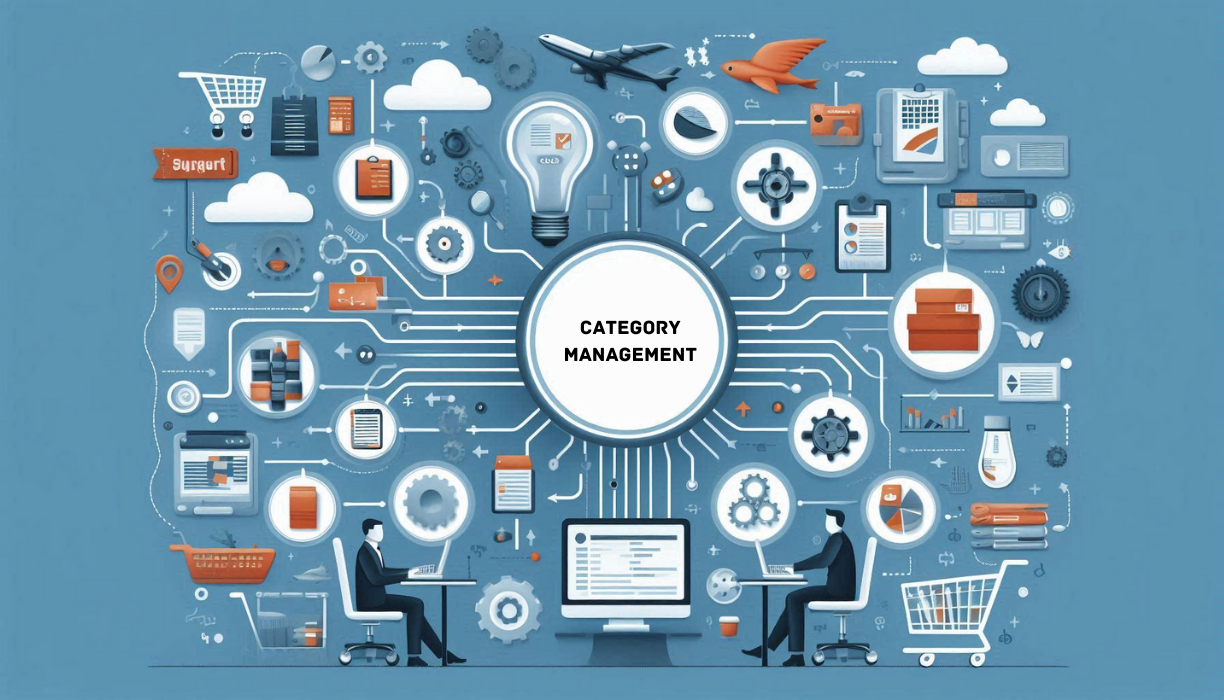Category management is a strategic approach to procurement that groups similar products or services into categories and manages them as a single unit. This approach allows organizations to streamline procurement processes, achieve cost savings, and enhance supplier relationships. In this blog, we will delve into effective category management strategies and provide insights into optimizing procurement categories.
Understanding Category Management
Category management involves organizing procurement activities around specific categories of products or services. Each category is managed as a distinct business unit, with a focus on understanding market dynamics, supplier capabilities, and internal requirements. The goal is to maximize value, minimize risks, and align procurement activities with overall business objectives.
Benefits of Category Management
1. Cost Savings:
By consolidating purchases within categories, organizations can leverage their buying power to negotiate better prices and terms with suppliers. Bulk purchasing and long-term contracts often result in significant cost savings.
2. Improved Supplier Relationships:
Category management fosters closer relationships with key suppliers. By working collaboratively, organizations can achieve better quality, innovation, and service levels from their suppliers.
3. Enhanced Efficiency:
Streamlining procurement processes within categories reduces complexity and administrative overhead. This leads to more efficient procurement operations and faster decision-making.
4. Better Risk Management:
A focused approach to managing categories allows organizations to identify and mitigate risks more effectively. This includes supply chain disruptions, market volatility, and supplier performance issues.
5. Alignment with Business Goals:
Category management ensures that procurement activities are aligned with the organization’s strategic objectives. This helps in achieving long-term goals such as sustainability, innovation, and market competitiveness.
Effective Category Management Strategies
1. Conduct Spend Analysis:
The first step in category management is to conduct a thorough spend analysis. This involves examining historical spend data to identify trends, patterns, and opportunities for cost savings. Categorize spend data to understand where money is being spent and identify high-impact categories.
2. Develop Category Strategies:
For each category, develop a tailored strategy that aligns with the organization’s objectives. This strategy should include goals, key performance indicators (KPIs), and action plans. Consider factors such as market dynamics, supplier landscape, and internal requirements.
3. Segment Suppliers:
Segment suppliers within each category based on their strategic importance and performance. This allows for differentiated management approaches, such as strategic partnerships with key suppliers and transactional relationships with less critical ones.
4. Market Intelligence:
Gather market intelligence to stay informed about industry trends, supplier capabilities, and market conditions. This information is crucial for making informed decisions and staying ahead of potential risks and opportunities.
5. Collaborative Supplier Relationships:
Foster collaborative relationships with key suppliers. Engage in regular communication, joint planning, and innovation initiatives. Collaboration can lead to better quality, reduced costs, and improved service levels.
6. Leverage Technology:
Utilize procurement technology to streamline category management processes. Tools such as e-procurement platforms, spend analysis software, and supplier relationship management (SRM) systems can enhance efficiency and visibility.
7. Total Cost of Ownership (TCO):
Consider the total cost of ownership, not just the purchase price, when making procurement decisions. TCO includes factors such as maintenance, disposal, and operational costs. This approach ensures that procurement decisions are based on long-term value rather than short-term savings.
8. Cross-Functional Teams:
Form cross-functional teams that include representatives from procurement, finance, operations, and other relevant departments. These teams can provide diverse perspectives and ensure that category strategies are aligned with overall business goals.
9. Continuous Improvement:
Category management is an ongoing process that requires continuous improvement. Regularly review and update category strategies based on changing market conditions, supplier performance, and organizational goals.
10. Sustainability and Ethical Considerations:
Integrate sustainability and ethical considerations into category management strategies. This includes selecting suppliers who adhere to ethical practices, reduce environmental impact, and contribute positively to society.
Implementing Category Management
1. Executive Support:
Secure executive support for category management initiatives. This ensures that the necessary resources and authority are provided to implement strategies effectively.
2. Training and Development:
Invest in training and development for procurement professionals. Equip them with the skills and knowledge needed to manage categories effectively, including negotiation, market analysis, and supplier management.
3. Change Management:
Implement change management practices to ensure smooth adoption of category management processes. Communicate the benefits and provide support to employees during the transition.
4. Performance Measurement:
Establish a robust performance measurement system to track the success of category management initiatives. Use KPIs to measure cost savings, supplier performance, and alignment with business goals.
Conclusion
Category management is a powerful approach to optimizing procurement activities. By focusing on specific categories, organizations can achieve cost savings, improve supplier relationships, enhance efficiency, and align procurement with strategic objectives. Implementing effective category management strategies requires a thorough understanding of spend data, market dynamics, and internal requirements. With the right strategies and tools, organizations can unlock significant value and drive long-term success in their procurement operations.




